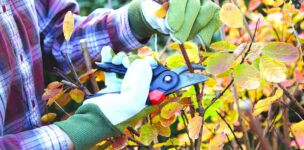
Fall Garden Checklist – Atchison Globe Now
As autumn creeps closer we need to start preparing our gardens for our next growing season. While it might seem like garden work is done for the season, giving your garden extra TLC now can have big impacts on its productivity next summer. Here are some steps to take to boost your next growing season: 1. Map your current garden: If you haven’t already, map out where your annuals are. When spring comes, you will want to refer back to this map to ensure you are rotating your plants to curb disease that may overwinter in the soil. Ideally, you should not put plants from the same family in the same location.
2. Do a soil test and amendments: If you have not done a soil test in the past couple years, it might be a good time to see where you soil is at. If you need to adjust the pH, doing it now will give your soil pH time to adjust.
3. Split up perennial flowers: Our spring-blooming perennials can be divided up in September and early October. You want them back in the ground well before the frost hits so their roots can re-establish before the winter. You can divide lilies, peonies, and irises. Make sure to look up how frequently can be divided, as not all plants can be divided each year.
4. Clear out the weeds: Do one last round of weeding, and make sure to get those weeds that have gone to seed. This will help lower the number of weeds you need to deal with next spring.
5. Clear out debris: Remove debris from plants with disease or insect issues. Diseases and insects can overwinter in debris from infected plants. Rather than compost diseased or infected material, either add it to a burn pile or disposed of it in the trash.
6. Take care of the leaves: If you have leaves on your lawn, rather than rake them, go over them with a mower a couple of times. This will prevent them from smothering the lawn but help provide nutrients for the soil and material for birds to nest with.
7. If you are going to plant a cover crop: Remove other plant debris from your garden and rake out the soil to prepare it.
8. If you are not planting cover crops: You can leave dead plant material in your garden until you plant next year, as will provide food and habitat for native pollinators, birds, and wildlife throughout the winter and early spring.
9. Mulch tender plants: After plants lose their foliage in late October, apply mulch to tender perennials and perennials planted in late fall. A layer of 4-6 inches of mulch will help prevent frost injury during the winter. These protective layers of mulch should be removed in early spring so that the plants can pop back up. Be sure to not apply mulch prematurely – if the plant is not yet dormant, the added insulation can post-pone their dormancy phase and cause more frost damage.
If you have questions on any of these steps or how to care for your garden, please reach out to our office for assistance.



